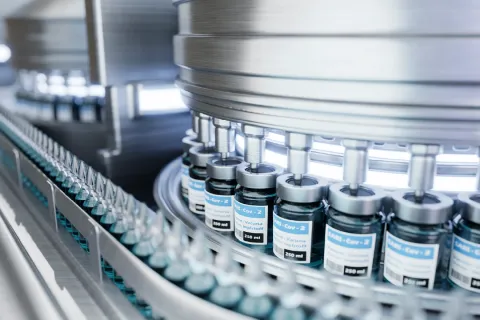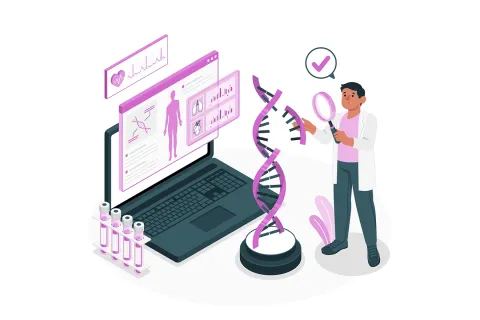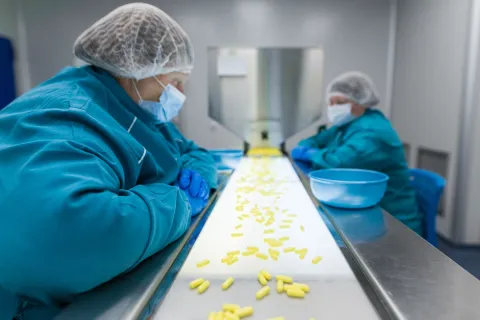
In the pharmaceutical industry, Regulatory artwork plays a crucial role in ensuring compliance, quality, and patient safety. The creation and management of artwork for packaging and labeling must meet stringent requirements set by Regulatory bodies such as the FDA. Developing and sustaining "right-first-time" artwork capabilities is essential for pharmaceutical companies to streamline the Regulatory artwork process and minimize errors and revisions. This blog article will explore the importance of design, artwork pack management, compliance, and validation in crafting high-quality Regulatory artwork in the pharma industry. By implementing effective strategies, companies can enhance their Regulatory artwork capabilities, save time and costs, ensure Regulatory compliance, maintain brand consistency, and prioritize patient safety.
Ready to Achieve 'Right-First-Time' Artwork? Contact Us
Request a Consultation
Understanding the Regulatory Artwork Process
Before diving into the details, let's first understand the Regulatory artwork process in the pharma industry. This process involves several key steps:
- Artwork Creation: Designing and creating artwork that meets Regulatory requirements, including labeling, product information, and branding elements.
- Pack Management: Managing the artwork for different packaging formats, sizes, and variations, ensuring consistency and accuracy across all product lines.
- Compliance: Ensuring that the artwork complies with Regulatory guidelines, including FDA validation and quality norms.
- Validation: Conducting thorough reviews and approvals to validate the artwork for accuracy, completeness, and adherence to Regulatory standards.
Importance of "Right First Time" Artwork Capabilities
Developing and sustaining "right-first-time" artwork capabilities is crucial for pharmaceutical companies. This means creating accurate, compliant, and error-free artwork from the initial stages, reducing the need for revisions and rework. Here's why it matters:
- Time and Cost Efficiency: By getting the artwork right the first time, companies can save valuable time and resources that would otherwise be spent on revisions, reprints, and delays in product launches.
- Regulatory Compliance: The pharma industry is heavily regulated, and artwork plays a vital role in meeting Regulatory requirements. "Right first-time" capabilities ensure compliance with FDA labeling requirements, reducing the risk of non-compliance penalties and delays in product approvals.
- Brand Consistency: Consistent and error-free artwork across product lines helps maintain brand integrity and recognition, enhancing customer trust and loyalty.
- Patient Safety: Accurate and clear labeling is crucial for patient safety. "Right first-time" artwork capabilities minimize the risk of errors or omissions in critical information, such as dosage instructions, warnings, and contraindications.
Strategies for Developing "Right First Time" Artwork Capabilities
To develop and sustain "right-first-time" artwork capabilities, pharmaceutical companies can implement the following strategies:
- Robust Design and Review Processes: Establishing a structured design and review process that involves cross-functional teams, including Regulatory experts, designers, and quality assurance personnel. This ensures that all aspects of the artwork, from content to layout, are thoroughly reviewed and validated.
- Automation and Technology: Leveraging artwork management software and automation tools to streamline the artwork creation and review process. These tools can help ensure consistency, accuracy, and compliance by providing version control, annotation features, and automated checks for Regulatory requirements.
- Training and Education: Providing comprehensive training to employees involved in the artwork process, including designers, Regulatory affairs personnel, and quality assurance teams. This ensures a deep understanding of Regulatory requirements and best artwork creation and validation practices.
- Continuous Improvement: Establishing a culture of continuous improvement by conducting regular audits, gathering feedback from stakeholders, and implementing lessons learned from previous artwork projects. This helps identify areas for improvement and ensures that "right-first-time" capabilities are consistently refined and enhanced.
Conclusion
Developing and sustaining "right-first-time" artwork capabilities is essential in the pharmaceutical industry to ensure compliance, quality, and patient safety. By implementing robust design and review processes, leveraging automation and technology, providing training and education, and fostering a culture of continuous improvement, pharmaceutical companies can enhance their Regulatory artwork capabilities and streamline the artwork creation and validation process. This ultimately leads to more efficient operations, reduced costs, and improved patient outcomes. Freyr has a proven record of 100% right-first-time Regulatory artwork submissions. Know more about our capabilities and contact us to stay compliant.









